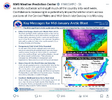#BREAKING: Massive Search and Rescue Underway at Tahoe Ski Resort After Major Avalanche Buries and injures Multiple People
#Olympicvalley | #California
Numerous emergency personnel and other agencies are currently at the Palisades Tahoe Ski Resort in Olympic Valley, California, conducting a massive search and rescue after multiple people were buried in a major avalanche near the GS Gully area of the KT-22 lift, officials report. All lift operations at Palisades and Alpine are closed for today. The extent of trapped individuals remains unknown at this time but reports of multiple injuries this story is still developing.
You are using an out of date browser. It may not display this or other websites correctly.
You should upgrade or use an alternative browser.
You should upgrade or use an alternative browser.
SOTT monthly Earth Changes Summary video suggestions
- Thread starter treesparrow
- Start date
OLYMPIC VALLEY, Calif. (News 4 & Fox 11) — Another avalanche was reported at a Lake Tahoe ski resort just one day after the US’ first deadly slide of the season.
Authorities at Palisades Tahoe, formerly Squaw Valley, received reports around 12:30 p.m. about an avalanche near Wolverine Bowl on the Alpine Meadows side of the resort.
A spokesman for the world renowned resort said ski patrol conducted avalanche hazard mitigation prior to opening the ski area, including shots from a 105mm howitzer and ski cutting through the area.
After extensive searches using RECCO and avalanche dogs, ski patrol confirmed there were no victims and reopened the terrain.
The Placer County Sheriff’s Office identified the person killed in Wednesday’s avalanche as Kenneth Kidd, 66, a resident of nearby Truckee and Point Reyes. One person suffered a lower leg injury and two others were treated for unspecified injuries and released, officials said.
In response to the first avalanche, Michael Gross, vice president of mountain operations, said before deeming an area safe to open, the team evaluates the conditions relying on their expertise and historical data.
“You know we’ve got decades worth of weather data that we’re always resourcing or referencing, so looking at current forecasts, looking at all different models, looking at wind speed, snow density, wind direction," Gross told reporters Wednesday. "There’s a variety of things that go into play and the people that are doing the work are truly experts in their field. Most of them have been working at it 10 to 20 years, some of them upwards of 50 years, just doing forecasting.”
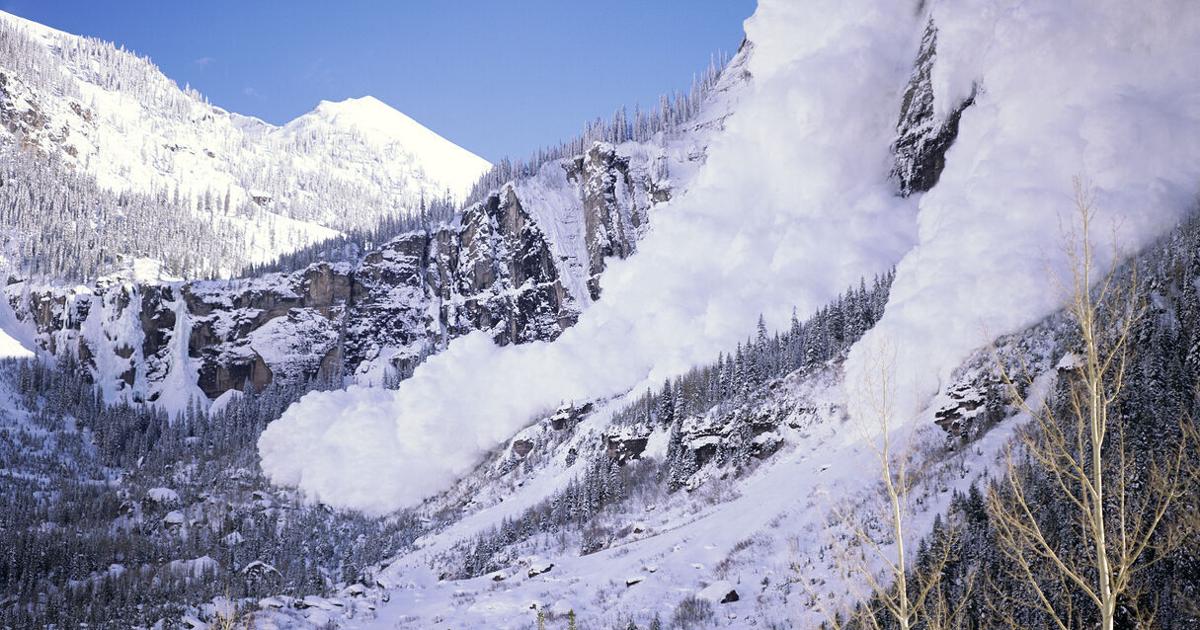
 denvergazette.com
Jan 11, 2024 Updated 33 min ago
denvergazette.com
Jan 11, 2024 Updated 33 min ago
The avalanche danger in Colorado is about to reach high levels across the state, including zones below treeline, as wind will affect mountain snow first, then heavy accumulations on top of it.
Brian Lazar from the Colorado Avalanche Information Center and Aaron Colson with Friends of the CAIC spoke on Instagram Thursday about the incoming snow storms and wind event set to wreak havoc on the slopes of Colorado.
"The West Elks already have an avalanche warning in place today (Thursday)," Lazar said shortly after the live stream started. "There will be slabs over the weak layers of snow we have now and areas where backcountry travelers can go are going to be limited during the storm cycle."
The CAIC said most slopes have been rather safe from avalanche danger between December to early January, with only small snow amounts accumulating, but that is going to change quickly and become a high risk lasting for several days after the storms exit the state.
"Size two avalanches are to be expected to run naturally on slopes above 30 degrees and we'll be right on the edge of skier-easily triggered avalanches too," he said.
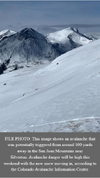
The wind coming in will help push avalanche danger up even below treeline on steeper slopes Lazar said, especially as the forecasted totals reach over a certain level — "it'll get dangerous at some point, 8-10 inches or more will make it quite spicy."
Lazar said the agency forecasters have seen "dry sluffing" in the recycled powder due to the low amounts of snow and long period without much, but the weak layer underneath the most recent, newer snow (Jan 8-10) didn't slab up.
All mountain zones (north, central and southern) will be affected and most likely all in the high danger rating until at least Monday, Lazar said.
Good news, however, is the potential for lowest danger backcountry skiing and riding will be in the Sangre de Cristos, around Pikes Peak and in the Buffalo Peaks since not much snow is currently there anyway even though the snow layers are weak and patchy.
Lazar said about getting out to ski or snowboard tour to: "travel as is you could trigger from a distance or from below. All is guilty (slopes) until proven innocent."
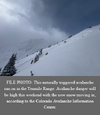
This includes wind-affected slopes, too. All of the new snow coming in is on a powerful jet stream Lazar said, and cautioned tourers to beware of wind-affected snow on flat ground, meaning if the snow is wind affected on the flats it will be wind affected on the slopes.
"Models are coming together with more confidence in the wind. If snow fall totals pan out with lots coming, it'll be (the question) which areas will fall short of the threshold? What will load up most and slab over the weak layers making high danger (happen)?" Lazar said.
"This will not heal up in days. We will come out of high danger Monday, but still considerable (safety rating) for next week," Lazar said.
"Natural (avalanche) cycles should be over (by Monday), but waiting for skiers to trigger for most of the week ahead. It'll be a really gradual decrease during the loading event 4-7 days afterwards."
"We are not at maximum amount of snow yet this season. Avalanches won't run peak to creek, not like in March 2019, there is not enough volume right now, but size 2 avalanches are mostly possible," Lazar said. "Stay 100s of yards away from those 30+ slopes and give a buffer from them."
Size 3 avalanches are possible on slopes with snow totals reaching over 18-plus inches.
Lazar suggested snowshoeing or other winter activities (snowmobiling) on non-avalanche terrain will be good to go.
For those looking to ski and ride at resorts, Lazar said if the ski areas have it closed, stay out of it. Do not duck ropes, exponentially risk heightened during the storm cycle and ski patrol cannot guarantee a 100% chance a slope won't fail and avalanche.
Stretches of highways could be affected by wind loading up high in avalanche paths that cross roads from Rabbit Ears to Wolf Creek. Lazar said to check cotrip.org for updated info on closures.
(Contact Denver Gazette digital producer Jonathan Ingraham at jonathan.ingraham@denvergazette.com or on X at @Skingraham.)
Meanwhile
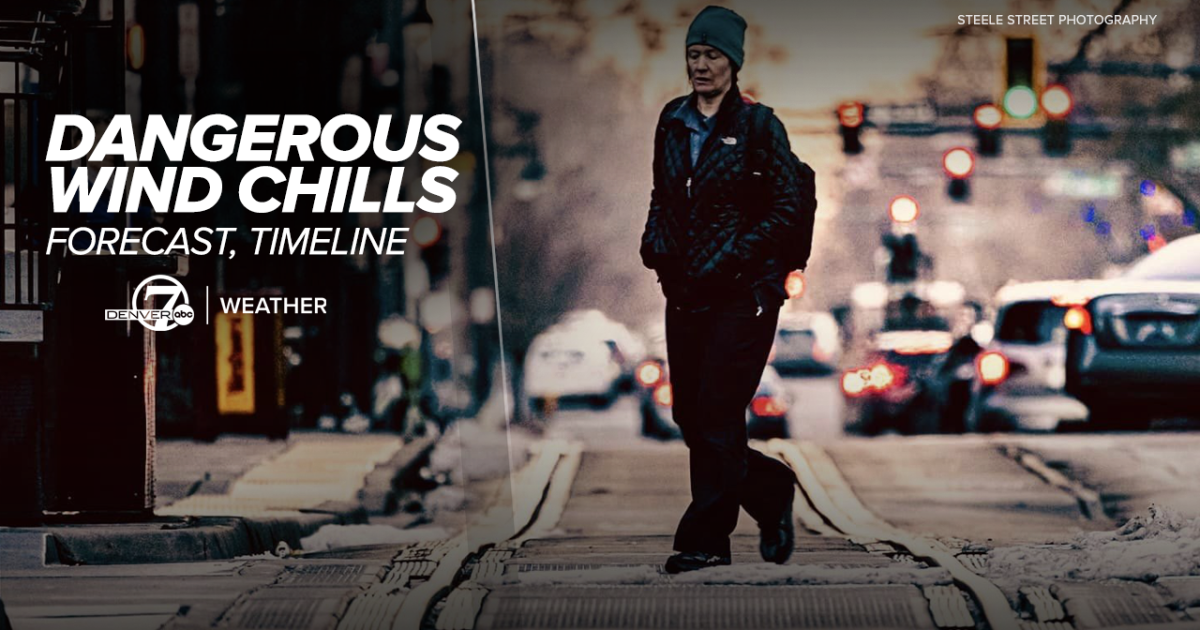
 www.denver7.com
www.denver7.com
Authorities at Palisades Tahoe, formerly Squaw Valley, received reports around 12:30 p.m. about an avalanche near Wolverine Bowl on the Alpine Meadows side of the resort.
A spokesman for the world renowned resort said ski patrol conducted avalanche hazard mitigation prior to opening the ski area, including shots from a 105mm howitzer and ski cutting through the area.
After extensive searches using RECCO and avalanche dogs, ski patrol confirmed there were no victims and reopened the terrain.
The Placer County Sheriff’s Office identified the person killed in Wednesday’s avalanche as Kenneth Kidd, 66, a resident of nearby Truckee and Point Reyes. One person suffered a lower leg injury and two others were treated for unspecified injuries and released, officials said.
In response to the first avalanche, Michael Gross, vice president of mountain operations, said before deeming an area safe to open, the team evaluates the conditions relying on their expertise and historical data.
“You know we’ve got decades worth of weather data that we’re always resourcing or referencing, so looking at current forecasts, looking at all different models, looking at wind speed, snow density, wind direction," Gross told reporters Wednesday. "There’s a variety of things that go into play and the people that are doing the work are truly experts in their field. Most of them have been working at it 10 to 20 years, some of them upwards of 50 years, just doing forecasting.”

Weekend snow storms to create high avalanche danger throughout Colorado | OutThere Colorado
The avalanche danger in Colorado is about to reach high levels across the state, including zones below treeline, as wind will affect mountain snow first, then heavy accumulations on top
The avalanche danger in Colorado is about to reach high levels across the state, including zones below treeline, as wind will affect mountain snow first, then heavy accumulations on top of it.
Brian Lazar from the Colorado Avalanche Information Center and Aaron Colson with Friends of the CAIC spoke on Instagram Thursday about the incoming snow storms and wind event set to wreak havoc on the slopes of Colorado.
"The West Elks already have an avalanche warning in place today (Thursday)," Lazar said shortly after the live stream started. "There will be slabs over the weak layers of snow we have now and areas where backcountry travelers can go are going to be limited during the storm cycle."
The CAIC said most slopes have been rather safe from avalanche danger between December to early January, with only small snow amounts accumulating, but that is going to change quickly and become a high risk lasting for several days after the storms exit the state.
"Size two avalanches are to be expected to run naturally on slopes above 30 degrees and we'll be right on the edge of skier-easily triggered avalanches too," he said.

The wind coming in will help push avalanche danger up even below treeline on steeper slopes Lazar said, especially as the forecasted totals reach over a certain level — "it'll get dangerous at some point, 8-10 inches or more will make it quite spicy."
Lazar said the agency forecasters have seen "dry sluffing" in the recycled powder due to the low amounts of snow and long period without much, but the weak layer underneath the most recent, newer snow (Jan 8-10) didn't slab up.
All mountain zones (north, central and southern) will be affected and most likely all in the high danger rating until at least Monday, Lazar said.
Good news, however, is the potential for lowest danger backcountry skiing and riding will be in the Sangre de Cristos, around Pikes Peak and in the Buffalo Peaks since not much snow is currently there anyway even though the snow layers are weak and patchy.
Lazar said about getting out to ski or snowboard tour to: "travel as is you could trigger from a distance or from below. All is guilty (slopes) until proven innocent."

This includes wind-affected slopes, too. All of the new snow coming in is on a powerful jet stream Lazar said, and cautioned tourers to beware of wind-affected snow on flat ground, meaning if the snow is wind affected on the flats it will be wind affected on the slopes.
"Models are coming together with more confidence in the wind. If snow fall totals pan out with lots coming, it'll be (the question) which areas will fall short of the threshold? What will load up most and slab over the weak layers making high danger (happen)?" Lazar said.
"This will not heal up in days. We will come out of high danger Monday, but still considerable (safety rating) for next week," Lazar said.
"Natural (avalanche) cycles should be over (by Monday), but waiting for skiers to trigger for most of the week ahead. It'll be a really gradual decrease during the loading event 4-7 days afterwards."
"We are not at maximum amount of snow yet this season. Avalanches won't run peak to creek, not like in March 2019, there is not enough volume right now, but size 2 avalanches are mostly possible," Lazar said. "Stay 100s of yards away from those 30+ slopes and give a buffer from them."
Size 3 avalanches are possible on slopes with snow totals reaching over 18-plus inches.
Lazar suggested snowshoeing or other winter activities (snowmobiling) on non-avalanche terrain will be good to go.
For those looking to ski and ride at resorts, Lazar said if the ski areas have it closed, stay out of it. Do not duck ropes, exponentially risk heightened during the storm cycle and ski patrol cannot guarantee a 100% chance a slope won't fail and avalanche.
Stretches of highways could be affected by wind loading up high in avalanche paths that cross roads from Rabbit Ears to Wolf Creek. Lazar said to check cotrip.org for updated info on closures.
(Contact Denver Gazette digital producer Jonathan Ingraham at jonathan.ingraham@denvergazette.com or on X at @Skingraham.)
Meanwhile

Colorado weather: Dangerously cold wind chills to settle across state, Denver metro
A major blast of Arctic air will blow through Colorado this weekend not only dropping low temps well below zero, but also bring dangerously cold wind chills of 20 to 30 degrees below zero.
Attachments
The number of deaths in the avalanche tragedy on the Medellín - Quibdó road rises to 33.
Rescue agencies continue with the search work.
Photos in the emergency area of the FFMM
Add, see the wrecked of the car, impressive the force of the soil.
Attachments
Fireball seen at Spain
BIG DAYtime #SPMN160124F BULLDOG RECORDED OVER #LLEIDA AND #TARRAGONA at 6h46m41s TUC (7h47 CET). With dozens of visual testimonies, this is how Cèsar Guasch @MeteoSantMateu captured it from Sant Mateu, #Castelló/#Castellón....
2) ALSO CAPTURED FROM ZUCAINA/SUCAIZA by Vicent Ibàñez @vicent_ibanyez. In the words of our coordinator @Josep_Trigo "A widely observed cometary event that after its complete ablation in the atmosphere has left no trace".
This looks to be another event - The time stamp on video indicates 18th of January, while the videos in post 1235 above shows 16th of January.
In 3 minutes  ?
?
Add. Harmless they say, not to worry. Still is that kind of news.
Add. Harmless they say, not to worry. Still is that kind of news.
Although it was not that big or visible impressive as others, is interesting to know the curse of events around it.
Imminent Asteroid Impactor 2024 BX1 near Berlin
Imminent Asteroid Impactor 2024 BX1 near Berlin
21st of January 2024
A very exciting night of observations has come to an end…
It started with the Meerkat alarm (ESA’s imminent impactor warning system) from NEOCC at 23:36, which was triggered by the publication of observation data of a new asteroid. A 100% heliocentric impactor with a size of 1 m was predicted to arrive in Germany or Northern Europe in the next few hours. It was quite surprising, as it had a 100% impact probability with such few observations. This rarely happens. Since it is also an object with a heliocentric orbit, it is very likely that it really is a natural object, such as a NEO (Near-Earth Object), and not an artificial satellite or similar.
We started the GHOST telescope at the university observatory within a few minutes. The weather was quite cloudy, but dry and there was still some hope of small gaps in the clouds.
In the meantime, other ESA employees became also aware of the alert. At 23:53, the Meerkat Alert was updated with new data. The parameters of the asteroid were still confirmed, but the impact time will be confirmed within the next 2 hours and the impact corridor is located in the Berlin/Brandenburg area.
At the same time, GHOST attempted to take its first measurements of the object. Despite the clouds, cloud-free images were occasionally taken, but these could not be analyzed with sufficient accuracy.
At 00:08, the impact period was further narrowed down to around 00:30 UTC with additional observation data from Meerkat. In the meantime, there was no longer any doubt in the community that this was a real object. Distribution lists such as the Minor Planet Mailing List were used to reach scientists worldwide and in particular to find observers in the region who were still awake.
In the meantime, GHOST produced analyzable images. However, it turned out that the object was now moving so fast in the sky that the telescope could no longer keep up with the measurements in the narrow field of view before the object moved out of the image. In addition, there were much larger systematic errors in the current position data of the object from the MPC, as these do not take Earth and Moon gravity into account when calculating the orbit of the object and this has now become a dominant effect due to the proximity of the Earth. In the end, GHOST looked in the wrong areas and was therefore unable to record the object despite the fact that some areas were cloud-free.
At the same time, all possible Allsky cameras (AllSky7 and FRIPON) at the observatory and in the Berlin/Brandenburg region that we supervise were checked for functionality in order to be able to detect the soon arriving fireball.
Further observations of the asteroid were recorded all around Europe, even up to 15 minutes before the impact, until the object disappeared into the Earth’s shadow and could no longer be seen. Links to webcams in Berlin were shared around worldwide to follow the event live, and a final appeal was quickly made to colleagues in the Berlin area to please look up into the sky and record it with cameras if possible. With nothing more to do, it came the time to just wait…
… We held our breath and at 01:32 the time had come …
The meteor was clearly visible on webcams, the prediction came true, exactly as shown in the calculations! People in the region clearly saw the very bright glow, which only lasted a few seconds. At its maximum, however, the fireball was brighter than the moon! A colleague in Berlin recorded the whole event with his camera (see Video) and made the recording available to us for evaluation and submission to IMO. More pictures and video were shared worldwide. People congratulated and congratulated each other. People from all over the world came together for a moment and worked together to capture this small 1 m rock for as long as possible with as many cameras and eyes as possible. What a spectacle!
In the meantime, the asteroid has been published by the MPC (MPEC 2024-B76 : 2024 BX1) and initial measurements have been collected by the IMO (International Meteor Organization). Further evaluations will certainly follow tomorrow. It is possible that a meteorite can be found 20 km west of Berlin in fields and meadows…
Have a good search!
ENORMOUS SOHOID #SPMN190124G RECORDED NORTH OF PORTUGAL AND GALICIA last Friday at 20h53 UTC. Probably associated with the Delta Cancrids, it was only captured by the Casas de Millán station (R. Kresken-P. Ramírez-Moreta/@esa /AMS82/AllSky7)
ice.csic.es/news/citizen-s....
In the face of the force of nature, we are little ants. 
| A massive landslide has left numerous workers buried underground at the Copler gold mine (Anagold Mining) in Iliç district, Erzincan province, Turkey. Search and rescue efforts have begun.
This is a view of the fireball at 19:30:01 on February 13, 2024, as captured by a camera pointed north from Fuji. It was a long, slow stream. It was a fireball of scattered meteors.
This is a comparative bright composite image of the fireball at 19:30:01 on February 13, 2024, and its ground trajectory and heliocentric orbit. The yellow line in the google earth image is the path of the meteor, and the white line is the projection of the meteor on the ground. It was a fireball that came from the asteroid belt.
Another abrupt storm, that's several already, right? I wonder if it could be a constant.
NOTICE
Severe #winter storm in #Xinjiang northwest #China
Temperature dropped from 6°C to -30°C in 24 hrs. Several vehicles were stranded on roads during the snow and ice storm, wind speed reached 170 km/h.
February 17, 2024


